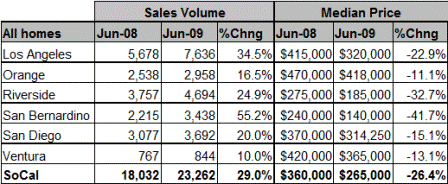[Skip to the end]
The ‘finanical crisis’ is not an economic concern per se. Particularly as the financial sector contributes no value added to the real economy and for the most part serves no public purpose.
However, when aggregate demand falls short of politcal goals, as evidenced by the unemployment rate, capacity utilization, and other measures, government has the immediate option of a fiscal adjustment of any size necessary to meet those political output and employment goals.
What caused the sudden drop in aggregate demand last July is therefore less important than what it is that continues to delay an appropriate fiscal response to immediately restore output and employment.
The answer is that an unwarrented fear of Federal deficits per se has taken the readily available option of using a fiscal adjustment to fully restore employment and output completely off the table.
As our politcal leaders, opinion leaders, and leading economists struggle to determine how the economy can be ‘saved’ with the least possible amount of Federal deficit spending, and none challenge the President’s statement that the nation has ‘run out of money,’ the unemployment rate continues to rise and millions of Americans needlessly depreciate in the unemployment lines.
It’s really quite simple. Taxation functions to reduce aggregate demand. It does not function to give the Federal governent ‘something to spend.’ In fact, if you pay your taxes at the Fed with actual cash they take your money, give you a receipt, and then throw the bills in a shredder. If you pay by check they change the number in your bank account to a lower number. The government doesn’t actually get anything to spend.
When the Federal government spends, numbers in bank accounts get changed by government to higher numbers from lower numbers. As Chairman Bernanke told Congress in May, when asked where the funds come from that he’s giving the banks, the Fed simply changes numbers in the member bank’s account at the Fed.
Federal spending is obviously not operationally constrained by revenues. There is no such thing as the Federal government ‘running out of money.’ The only constraints on nominal spending are self imposed.
So what does the statement ‘higher deficits today mean higher taxes later’ actually state? The reason taxes would be higher ‘later’ would be if aggregate demand is deemed too high at the time- unemployment too low and capicity utilization too high- and a tax hike proposed to cool down an overheating economy.
So does that statement not mean that higher deficits today will cause aggregate demand to increase, unemployment come down, and capacity utilization go up, to the point a tax increase might be called for?
And how does the Federal government pay off it’s debt? When Treasury securities mature the Fed debits the holder’s security account at the Fed and credits his reserve account at the Fed. End of story.
The risks of deficit spending are inflation, not insolvency or even higher interest rates. Yet the public debate is paralyzed by fears of Federal insolvency, and ratings agencies only add to that fear with threats of downgrades.
This misinformation IS the problem, and it isn’t rocket science. There will always be something that causes a surprise drop in aggregate demand. And, in fact I have made numerous recommendations for banking and the financial sector over the last several years that would have prevented most of the subsequent problems, and drastically scaled back the entire financial sector to limit it to areas of direct public purpose.
The greater problem, however, is the inability of our political leaders to respond appropriately when aggregate demand does fall, for any reason.
Therefore I urge you to redirect this project to instead promote an understanding of how a currency actually functions, and the operational reality of monetary operations and reserve accounting.
Determining ‘what went wrong’ will do nothing to enlighten policy makers as to their available fiscal options that can immediately restore the American economy to desired levels of employment and output. In fact, the effort will only delay a favorable outcome as energies get diverted from the more urgent issue of restoring demand.
FYI – the Roosevelt Institute is launching a major new initiative around the new Pecora Commission – we have been posting significant commentary on www.newdeal20.org (thank you for the great overview launch piece Bill), we have a partnership with Huffington and have created a Big News page around it, have investigative reporters in the works to track the commission, are considering a shadow commission, etc. As part of that, we have written an open letter to the commission that we will launch publicly the minute it gets announced – the open letter pushes for the three criteria that Bill discusses. We have several prominent economists and historians signing it (Stiglitz, Galbraith, Robert Reich, Bill, etc). The goal is to have 50-100 major econ/historians and then push it publicly once the commission members are formally announced (possibly in a day or two according to my sources). You can see the open letter here www.whatcausedthecrisis.com – if you are willing to sign the open letter, please let me know – please send me your name and affiliation so I can list you appropriately. We are also planning a media push around it so if you can speak on it or want to blog, please let me know
Thank you –
And if you can sign the letter, please let me know soon – I think this is happening in a day or two.
[top]



